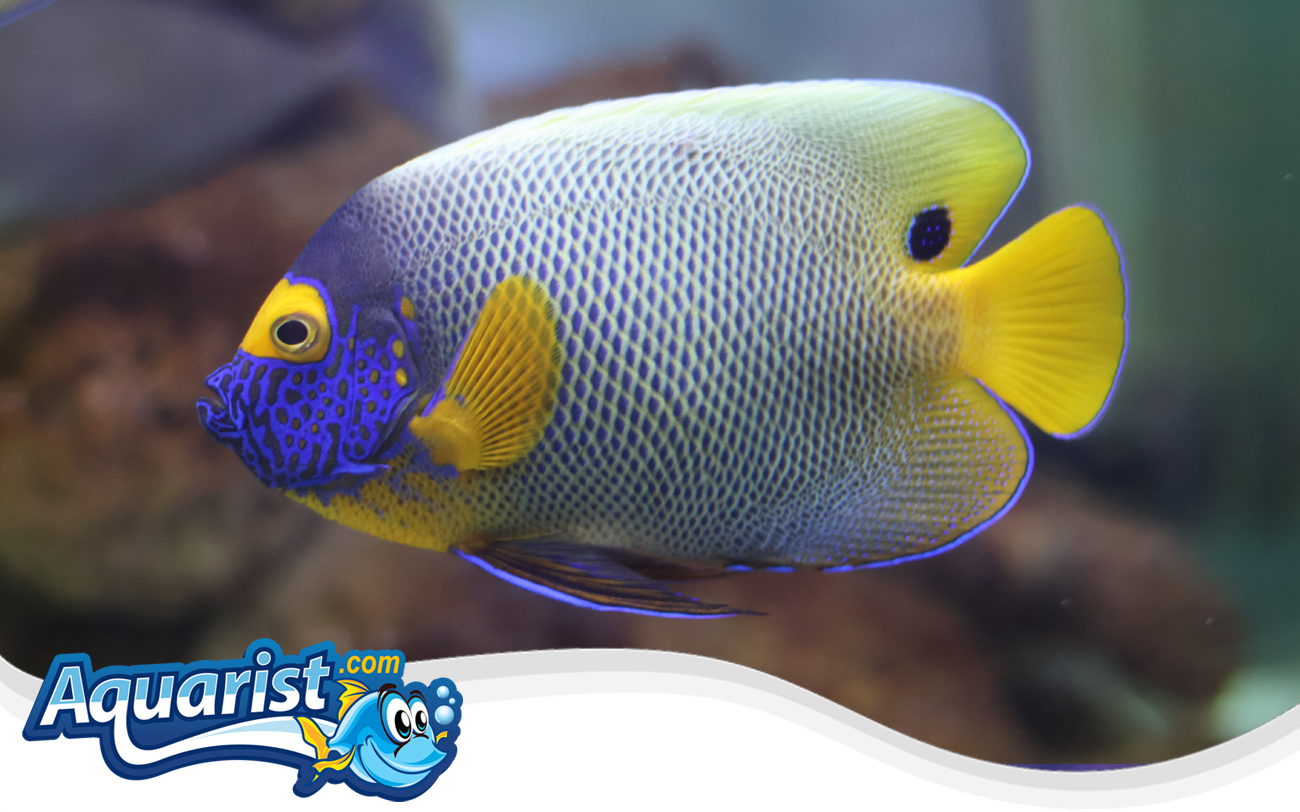Overview
- Native to the Indo-Pacific region, typically found in coral-rich lagoons and reef slopes.
- Distinctive appearance featuring a yellow face with a vibrant blue mask, a pale body with blue scales, and blue highlights on fins and tail.
- Known for its bold, territorial personality and striking coloration.
- Recommended for experienced marine aquarists due to its demanding habitat and care requirements.
Feeding
- Omnivorous; natural diet includes sponges, algae, coral polyps, tunicates, and small invertebrates.
- Provide a diverse diet in captivity, including marine algae sheets, angelfish preparations, mysis shrimp, brine shrimp, and chopped seafood.
- Regular multiple daily feedings recommended to maintain optimal health and vibrant coloration.
- Dietary supplementation with sponge and algae-based foods necessary for nutritional balance.
Habitat
- Requires large aquariums (minimum 180 gallons) with ample swimming room and structured live rock.
- Mature and stable aquarium conditions essential for successful long-term care.
- Plenty of caves, crevices, and hiding spots required to mimic their natural reef habitats.
- Strong filtration and moderate water circulation crucial for maintaining excellent water quality.
Fish Care
- Preferred water temperature: 74-79°F (23-26°C).
- Recommended pH level: 8.1-8.4; specific gravity: 1.020-1.025.
- Sensitive to fluctuations in water parameters; regular monitoring and diligent aquarium maintenance necessary.
- Monitor closely for signs of marine diseases and parasites; early detection and prompt treatment crucial.
Compatibility
- Semi-aggressive; best housed with similarly sized and temperament-compatible fish.
- Not typically reef-safe; likely to nip at corals, sponges, and ornamental invertebrates.
- Suitable tank mates include large tangs, wrasses, and other semi-aggressive marine fish.
- Territorial behavior requires careful introduction and ample space to minimize conflicts.
Aquarium Behavior
- Bold and territorial, actively exploring and defending their environment.
- Initially shy as juveniles, becoming more assertive and visible as adults.
- Often interactive with caretakers, particularly during feeding times.
- Ample hiding places and environmental enrichment help reduce aggression and stress.


